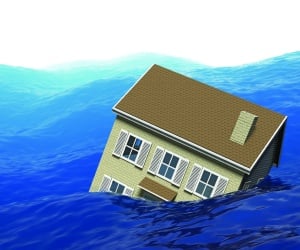

The ICA talks about the importance of building resilience against the catastrophes that are devastating Australia.
Catastrophes since the start of 2010 have caused billions of dollars of damage across Australia and insurance losses of more than $8.9bn. These disasters have highlighted the importance of a durable, resilient built environment, flood mitigation work and policies to help drive this work forward.
Underscoring this point, the Productivity Commission’s report, ‘Barriers to Effective Climate Change Adaptation’, released in March this year, found that properly constructed buildings resilient to extreme weather have lower insurance premiums.
Following the report, the Federal Government acknowledged that “improving resilience [...] would deliver future benefits” and that there would be significant benefits from changes to land-use planning laws that incorporated severe weather risks into planning decisions.
We strongly advocate the importance of building homes resilient to natural disasters; and are currently driving two significant resilience projects in this area:
ART provides a forum for collaboration and is helping align the agendas of its diverse group of stakeholders to raise awareness with government on the importance of building durable, resilient homes.
BRRT is a consumer tool under development that is designed to encourage homeowners, homebuyers, homebuilders and property professionals to adopt improved material selection and design.
A component of this is the Building Resilience Knowledge Database, a portal of information on the resilience of building products and materials to extreme weather events. BRRT will provide a comprehensive listing of all building materials available in Australia, such as roof tiles and insulation blocks, and list how durable they are to certain risks, such as saltwater inundation or hail damage.
Currently, building materials available for use in Australia must meet standards set by the Building Code of Australia (BCA). However, we believe builders need to go beyond the Code if they are to construct resilient homes that can withstand cyclones, floods, and other severe weather events.
As the BRRT is developed and becomes more widely used, it should help contribute to a change in attitudes on the importance of building durable, resilient properties.
We have been developing BRRT for several years, with the tool now undergoing final technical tests. In coming months, the tool will be refined before a public version is released.
We also expect a study conducted this year by James Cook University, which identifies key exposures to strata-title properties in tropical Australia that may be causing insurable losses, will be released soon. The results are expected to be useful to property owners and body corporates who may subsequently undertake engineering assessments of their own properties to detect vulnerabilities and to apply suitable remedies.
